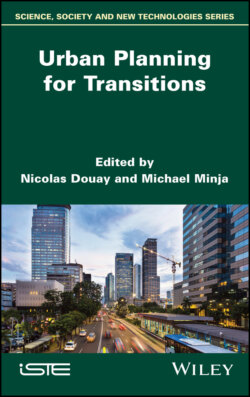Читать книгу Urban Planning for Transitions - Группа авторов - Страница 12
1.2. Context and background
ОглавлениеTable 1.1. Introductive summary table of Rotterdam Resilience Strategy
| Area (km2) | 325.79 |
| Population (Rotterdam municipality) | 644,688 |
| Population density (per km2) | 3,043 |
| Urban planning strategy | Rotterdam Resilience Strategy: Ready for the 21st Century |
| Project scale | Entire city (325.79 km2) |
| Strategy type | Social cohesion and education, Energy, Climate adaptation, Cyber, Vital infrastructure, Governance |
| Strategy origin | – The Instrument of Water Assessment (2000)– Climate Change Plan (2008)– National Spatial Strategy– The Rotterdam Climate Adaptation strategy (2013) |
| Responsible administrative authority | The Municipality of Rotterdam + other stakeholders depend on goals and actions |
The city of Rotterdam is a thriving world port city; it is the second largest Dutch city after the capital Amsterdam and currently has a population of more than 644,688 inhabitants (2020, Statistica website). It is located in the province of South Holland, in a delta region near the North Sea, as Map 1.1 shows. Rotterdam is considered one of the main gateways to overseas trade in Europe and an industrial and technological hub of the Netherlands.
Map 1.1. Location of Rotterdam city
(source: Time map website)
The Netherlands was one of the first countries to commit to the sustainability transition discourse in its public networks. In 2000, the government developed the instrument of Water Assessment for implementation in all spatial plans and spatial decisions relevant to water, sequentially becoming mandatory for zoning plans and project decisions.
However, this first plan embraced water management, but it did not have any integration with other urban complexities. The 2008 plan was complemented with initial measures that addressed climate change and, since then, water management has been incorporated in the National Spatial Strategy. This national strategy contributed to the Rotterdam Climate Initiative (RCI), launched in 2013, which aimed to “reduce CO2 emissions by 50% and to have made the region 100% climate proof by 2025”. This made Rotterdam one of the global pioneers in urban climate adaptation.
The city of Rotterdam released its Resilience strategy on April 2016 with a vision towards 2030. The strategy will strive to bring the city onto the next level of climate readiness. In fact, the implementation of this climate adaptation strategy had already started with the 2013 strategy and managed to fulfill a number of the objectives, hence exposing the plan’s ability to initiate change.
